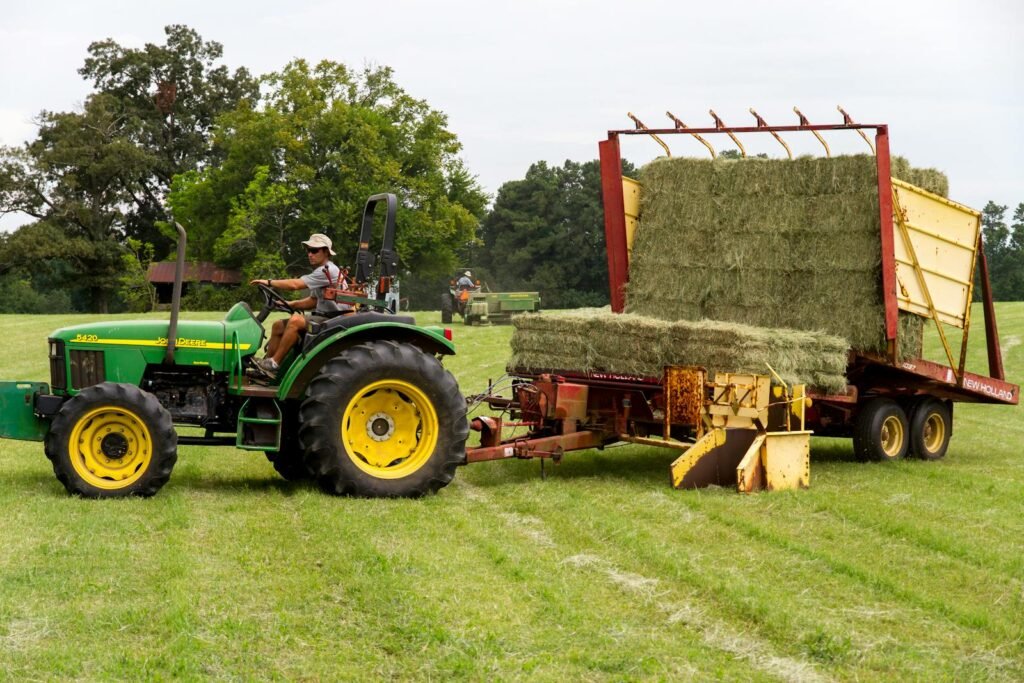California’s agricultural sector is at a crossroads. Rising labor costs, shrinking farmland, and a technological revolution in the fields are putting a strain on not only farmers, but also wildlife.
A Costly Transformation on the Farm

Farming in California has always been demanding, but recent years have added new layers of complexity. Labor costs, particularly for those using the H-2A visa program to hire seasonal workers, are skyrocketing. In fact, California tops the charts with average hourly expenses hitting $29, when housing and food are factored in. Because of these challenges, many growers have cut back or shifted to crops that need less labor.
The shift away from labor-intensive crops is reshaping rural economies and ecosystems alike. As fields fall quiet, species that have come to rely on these human-managed habitats are facing abrupt changes.
From Manual Labor to Machines: The Automation Wave

Faced with rising costs, many farmers are betting on automation. Tools like robotic weeders from Carbon Robotics and driverless tractors from Monarch Tractor are now moving from concept to necessity. For the farmer, these machines offer hope. For the wildlife, however, the story is more complicated.
Mechanized farming alters patterns of movement, noise, and land use. Nesting birds, rodents, and insects once accustomed to slow-moving humans must now adapt or flee from rapid, tireless machines. And with fewer human hands tending to the land, once-accidental habitats created by irrigation and crop rotation may disappear altogether.
The Vanishing Landscape: What Happens When Farmland Disappears?

One of the most sobering statistics comes from the USDA: California is on track to lose a third of its farmland and half of its farmers by 2052, compared to 1997 figures. As farms vanish, so do the open spaces and niche habitats many species rely on.
For years, the edges of farmland like shrubs along the borders, irrigation ponds, and freshly tilled soil have quietly provided shelter for foxes, rabbits, hawks, and pollinators. These little pockets of life weren’t planned, but they became safe spaces for all kinds of creatures. Now, as more fields are sold, repurposed, or simply left untouched, those hidden habitats are disappearing. The result? Local ecosystems, which are already hanging by a thread, could become even more unstable.
Tech Trouble: When Innovation Outpaces Investment

Ironically, just as agricultural automation becomes more necessary, funding for such innovations is drying up. Venture capital in ag tech dropped a staggering 69% since its peak in 2021. The implosion of high-profile vertical farming ventures hasn’t helped confidence in the sector.
For California, where proximity to crops is essential for ag tech companies, this downturn could push innovation hubs out of state further distancing farmers from the tools they increasingly depend on.
Policy and Preservation: Can Lawmakers Strike a Balance?
Assemblyperson Heather Hadwick, who represents District #1, has been vocal about the need for balance. She emphasizes that cutting-edge solutions must be met with grounded, rural-focused policies.
“We must take these concerns seriously,” Hadwick said. “That means investing in practical solutions like water infrastructure, modernized ports, and tax incentives that truly support producers on the ground.”
Without meaningful support, California could lose not just crops and economic strength but also the cultural and ecological fabric that farming communities have woven for generations.
What This Means for Wildlife: Silent Casualties in a Shifting Landscape

While most headlines focus on economic losses, the quiet disappearance of wildlife tells another story. As farmlands are replaced by development or high-efficiency monoculture, biodiversity plummets. Pollinators lose nectar sources. Birds lose feeding grounds. Amphibians lose water channels.
Farming once coexisted sometimes imperfectly, but functionally with nature. Now, with pressures mounting on all fronts, that balance is under threat.
A Shared Future at Stake

California’s farming crisis isn’t just a rural issue it’s an ecological alarm bell. The choices made today, from Sacramento’s chambers to Silicon Valley’s venture firms, will shape not just the future of food, but the fate of the species living alongside it.

Suhail Ahmed is a passionate digital professional and nature enthusiast with over 8 years of experience in content strategy, SEO, web development, and digital operations. Alongside his freelance journey, Suhail actively contributes to nature and wildlife platforms like Discover Wildlife, where he channels his curiosity for the planet into engaging, educational storytelling.
With a strong background in managing digital ecosystems — from ecommerce stores and WordPress websites to social media and automation — Suhail merges technical precision with creative insight. His content reflects a rare balance: SEO-friendly yet deeply human, data-informed yet emotionally resonant.
Driven by a love for discovery and storytelling, Suhail believes in using digital platforms to amplify causes that matter — especially those protecting Earth’s biodiversity and inspiring sustainable living. Whether he’s managing online projects or crafting wildlife content, his goal remains the same: to inform, inspire, and leave a positive digital footprint.




